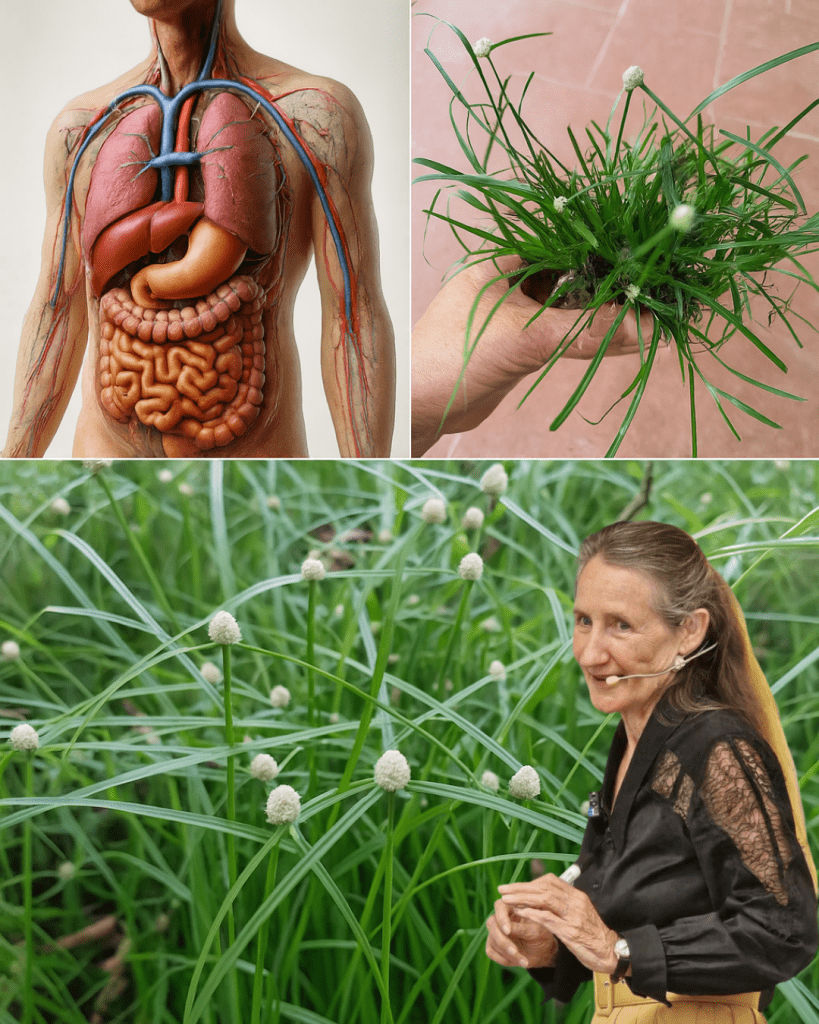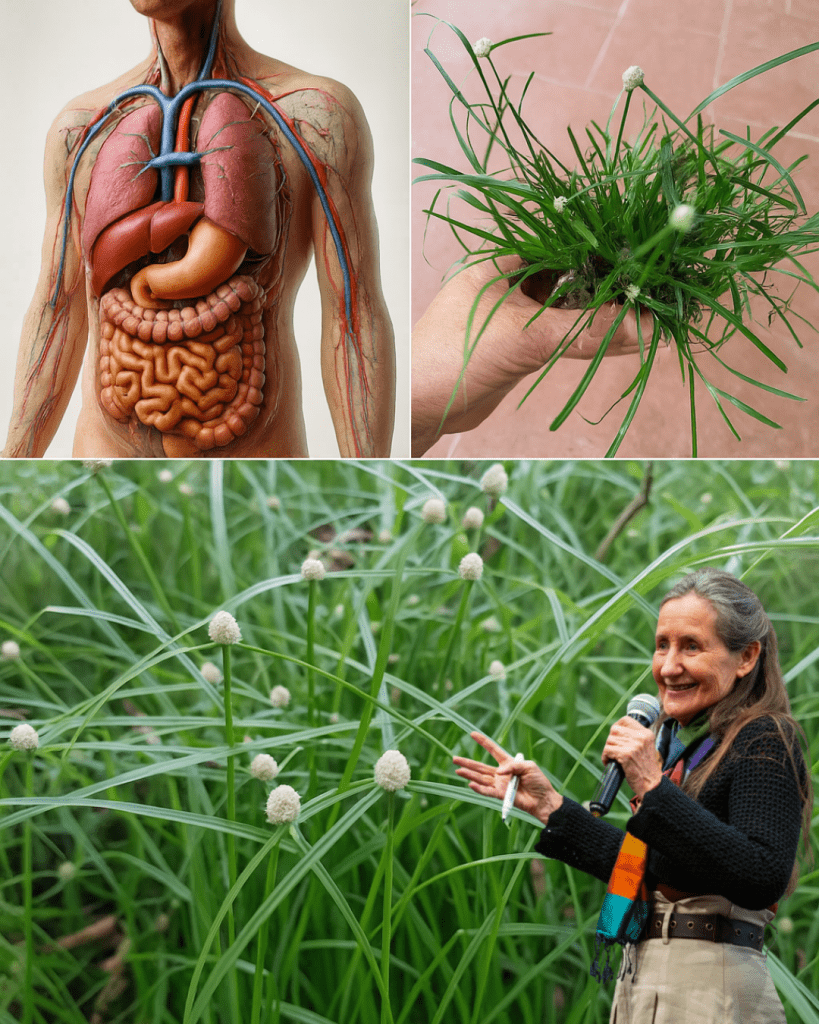Struggling with digestive discomfort, minor infections, or nagging pain? You might be surprised to learn that a common plant often dismissed as a weed could hold the key to natural relief. Kyllinga brevifolia, also known as green kyllinga or shortleaf spikesedge, is a resilient member of the sedge family with a history of traditional medicinal use in tropical regions. While it’s often seen as a pesky invader in lawns and fields, this plant offers promising health benefits backed by traditional knowledge and emerging science.
In this guide, we’ll explore the unique properties of Kyllinga brevifolia, its potential to support digestion, fight infections, and soothe pain, and how you can incorporate it into your wellness routine. From a simple tea recipe to topical applications, discover how this unassuming herb can become a powerful ally for your health.

What is Kyllinga Brevifolia?
Kyllinga brevifolia is a perennial sedge native to tropical Americas but now widespread in warm regions globally, including Asia, Africa, and Australia. Characterized by its grass-like leaves, triangular stems, and creeping rhizomes, it thrives in moist, sunny environments like rice paddies, lawns, and ditches. While often considered a weed due to its aggressive growth and ability to form dense mats, its rhizomes and leaves have been used in traditional medicine, particularly in Southeast Asia and the Philippines, for their therapeutic properties.
The plant grows to about 2-50 cm tall, with dark green, narrow leaves and small, globular flower heads that produce tiny seeds. Its reddish-purple rhizomes and ability to tolerate close mowing make it a tough competitor in cultivated areas, but these same traits contribute to its medicinal value.
Health Benefits of Kyllinga Brevifolia
Though less studied than its cousin Cyperus rotundus (nutgrass), Kyllinga brevifolia shares similar bioactive compounds like flavonoids, terpenoids, and essential oils, offering a range of potential health benefits. Here’s what traditional use and limited research suggest:
1. Supports Digestive Health
In traditional Filipino medicine, Kyllinga brevifolia is used to treat diarrhea. A paste made from its fresh tubers is consumed with rice daily for three days to relieve symptoms. Its potential antidiarrheal effects may stem from antimicrobial compounds that balance gut flora, similar to those found in related sedges.
- Best for: Diarrhea, indigestion, and gut imbalances.
- Traditional Use: Tubers are ground into a paste to soothe digestive upset.
2. Natural Relief for Inflammation and Pain
The fresh leaves of Kyllinga brevifolia are applied as a poultice to treat sprains, joint pain, and skin irritations like furuncles (boils). Its anti-inflammatory properties, likely due to flavonoids, may help reduce swelling and discomfort in affected areas.
- Best for: Muscle sprains, joint pain, and minor skin inflammation.
- Evidence: Anecdotal use in the Philippines supports its efficacy for topical pain relief.
3. Antimicrobial Action for Infection Prevention
The plant’s leaves and rhizomes exhibit antimicrobial properties, making them useful for treating minor wounds and skin infections. A decoction of the plant is used as an external wash for pruritis (itchy skin), potentially due to its ability to combat bacteria and fungi.
- Best for: Minor wounds, skin infections, and itch relief.
- Evidence: Traditional applications suggest antimicrobial effects, though scientific studies are limited.
4. Potential for Snake Bite Relief
In some cultures, a poultice of Kyllinga brevifolia leaves is applied to snake bites to reduce swelling and pain. While not a substitute for medical treatment, this use highlights its anti-inflammatory potential in emergency scenarios.
- Best for: Temporary relief of swelling from bites or stings (with medical follow-up).
- Caution: Always seek professional care for snake bites.
How to Use Kyllinga Brevifolia: A Simple Recipe and Methods
Incorporating Kyllinga brevifolia into your wellness routine is straightforward, using traditional methods adapted for home use. Below is a step-by-step guide to preparing a medicinal tea, along with other applications.
Kyllinga Brevifolia Tea for Digestive Support 🌿
Ingredients:
- 1 tbsp fresh or dried Kyllinga brevifolia rhizomes (washed thoroughly)
- 2 cups filtered water
- Optional: 1 tsp honey or a slice of ginger for flavor
Instructions:
- Prepare Rhizomes: Rinse fresh rhizomes under cool water to remove dirt. If using dried, ensure they’re from a reputable source.
- Boil Water: Bring 2 cups of water to a boil in a small pot.
- Simmer: Add rhizomes, reduce heat, and simmer for 10-15 minutes to extract active compounds.
- Strain: Pour through a fine mesh strainer into a cup, discarding solids.
- Enhance: Add honey or ginger for taste if desired.
- When to Drink: Sip 1 cup daily, ideally before meals, for digestive support.
Tip: Start with a small amount to assess tolerance. Limit to 1-2 cups daily to avoid overconsumption.
Topical Poultice for Pain and Skin Relief
Ingredients:
- 2-3 fresh Kyllinga brevifolia leaves or rhizomes
- 1-2 tsp water or aloe vera gel (for consistency)
Instructions:
- Crush Leaves/Rhizomes: Wash thoroughly and grind into a paste using a mortar and pestle.
- Mix: Add water or aloe vera gel to create a spreadable paste.
- Apply: Spread thinly on affected areas (e.g., sprains, boils, or itchy skin).
- Leave On: Let sit for 20-30 minutes, then rinse with lukewarm water.
- Best for: Joint pain, minor wounds, or skin irritations.
Usage Tip: Apply once daily and patch test first to avoid skin reactions.
Decoction for External Wash
Ingredients:
- Handful of fresh Kyllinga brevifolia leaves or rhizomes
- 4 cups water
Instructions:
- Boil: Bring water to a boil and add washed leaves or rhizomes.
- Simmer: Reduce heat and simmer for 20 minutes.
- Cool and Strain: Let cool slightly, then strain.
- Use: Apply as a wash to itchy or inflamed skin using a clean cloth.
- Best for: Pruritis or minor skin infections.
Frequency: Use 1-2 times daily as needed.
Safety and Precautions
While Kyllinga brevifolia is valued in traditional medicine, use it cautiously:
- Consult a Healthcare Provider: Essential if pregnant, breastfeeding, or on medications, as its effects are not fully studied.
- Allergies: Avoid if allergic to sedges or related plants. Watch for signs like rash or digestive upset.
- Moderation: Limit oral intake to avoid potential digestive discomfort from overuse.
- Source Quality: Use plants from clean, pesticide-free areas or trusted suppliers, as Kyllinga brevifolia grows in varied environments.
- Not a Cure: It supports minor ailments but isn’t a substitute for medical treatment for serious conditions like infections or snake bites.
If you experience persistent symptoms or adverse reactions, seek professional medical advice immediately.

Complementing Kyllinga Brevifolia with a Healthy Lifestyle
To maximize benefits, pair Kyllinga brevifolia with these habits:
- Hydration: Drink 8-10 cups of water daily to support detoxification and digestion.
- Anti-Inflammatory Diet: Include foods like turmeric, berries, and omega-3-rich fish to enhance its effects.
- Exercise: 30 minutes of moderate activity (e.g., walking or yoga) 5 days a week reduces inflammation.
- Stress Relief: Practice mindfulness or deep breathing to support its calming properties.
- Avoid Toxins: Limit alcohol and processed foods to reduce strain on your body.
These practices amplify the herb’s potential, creating a holistic approach to wellness.
Why Kyllinga Brevifolia Deserves Your Attention
Kyllinga brevifolia may be a common weed, but its traditional uses for digestion, pain relief, and infection prevention highlight its hidden potential. With simple preparations like tea or poultices, you can tap into its benefits while embracing nature’s pharmacy. Start cautiously, source wisely, and consult a professional to tailor its use to your needs. This unassuming plant could be your next step toward natural, vibrant health. 🌱
Disclaimer: Grok is not a doctor; please consult one. Don’t share information that can identify you.









